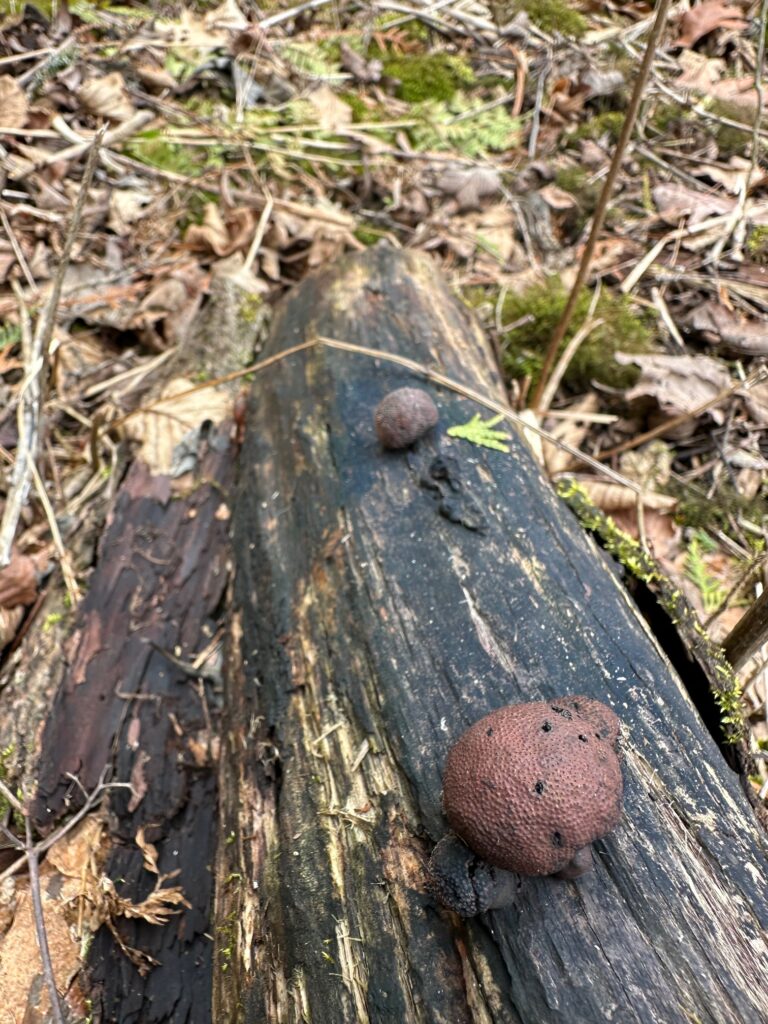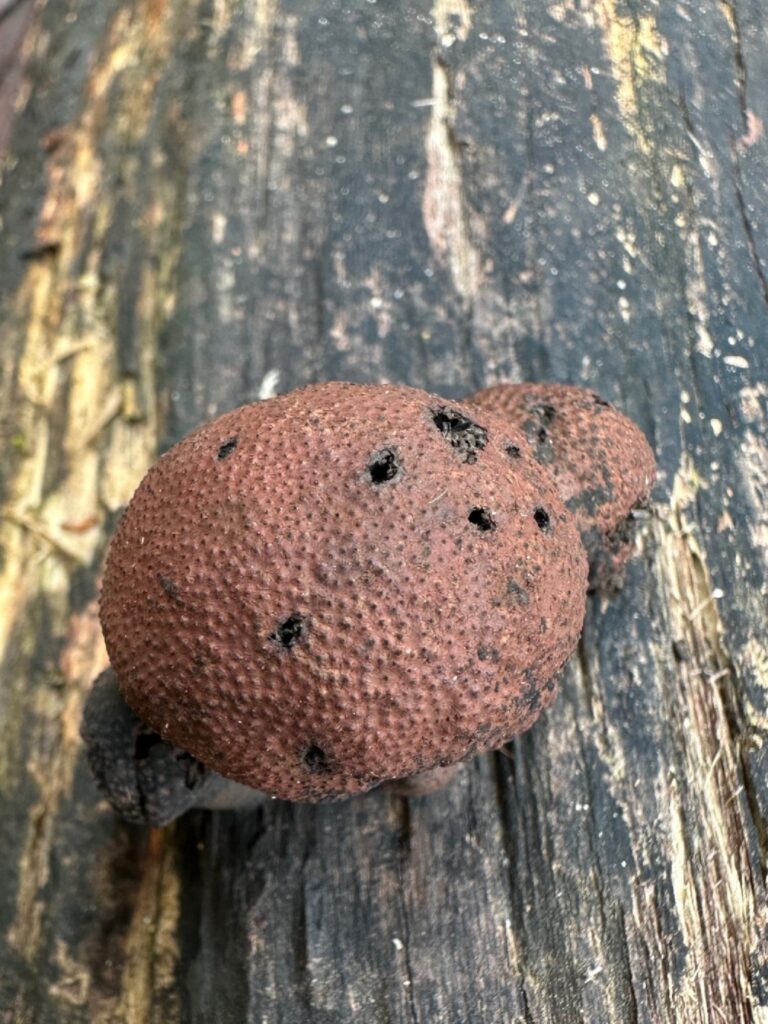by Nancy Nabak, communication & development coordinator
Inedible but cool, concentric cool. That’s what I discovered on a hike last Saturday morning. The “it thing” was a specimen of Daldinia concentrica, an inedible but purposeful fungus.

It was a tiny little thing, like four centimeters tiny, but once in my sights, I needed to create a relationship with this impish fungus.
I first took photos of it, carefully and quietly walking up to it like I might scare it off the rotting log. (Makes no sense, I know.) Then I mentally prepared to touch it, wondering if I might get a flat tire reaction upon contact, or feel something squishy. Neither. It was hard and by magnifying the heck out of it, I could see little bumps and dimples. This helped me identify it. It’s also commonly known as coal fungus, carbon balls, and King Alfred’s cake.

According to legend, King Alfred (ruled from 871-899, and by some considered the first king of England) once hid out in a country home during wartime and was put in charge of removing cakes from the oven when done. The story goes he fell asleep, and the cakes burned. Daldinia concentrica is said to resemble his baking blunder.
It turns out that this mini fungus is a food source for the concealer moth and plays a key role in accelerating the decomposition of fallen ash branches. Lucky for the concealer moth, we happen to have an abundance of those right now. I wonder if we’ll document an increase in the concealer moth population as our ash trees continue to fall due to the emerald ash borer devastation.
Staying on this track, I let myself wander to the next question, “What eats concealer moths around here?” Bats, birds, small rodents, skunks, and more. Birds gotta’ fly, fish gotta’ swim, and predators gotta’ prey. (We’ll talk about birds and moths another time, and I’m sure your ears will perk up.)
Back to the Daldinia concentrica, you can tell it’s something unique just from its name. The flesh part of the fruit body is arranged in concentric layers, like tree rings, which are related to its seasonal growth. If you come across one and harvesting is allowed at that location, cut it open and check it out.
Not only is it a neat looking fungus, it’s useful too. In a jam, Daldinia could be used as a form of tinder for starting a fire. It burns slowly like a charcoal briquette and can be transferred to another tinder bundle to start a bigger fire. Note the brown variety is usually too heavy and dense to be much good. The black variety is lighter and better, but it needs to be completely dry.
If you enjoy finding miniature treasures in nature, we have a great program coming up on April 23rd in our Dunes’ Digest series: “Everything Under An Inch.” Naturalist Matt Welter will show photos of things you might have missed because of their small size. From Yellow Fuzz Cone Slime to Fairy Wasps, this program will open your eyes to some of the most amazing and miniscule things you might see at Woodland Dunes and other natural areas. Bring your own lunch and we will provide coffee, water, tea and a sweet treat. Cost: Sliding scale of $1-$10 per person. To register, email Jess at jessicaj@woodlanddunes.org or call 920-793-4007. Registration appreciated by Monday, April 21st.
We hope you will join us in the tiny kingdom!
Photos by Nancy Nabak
